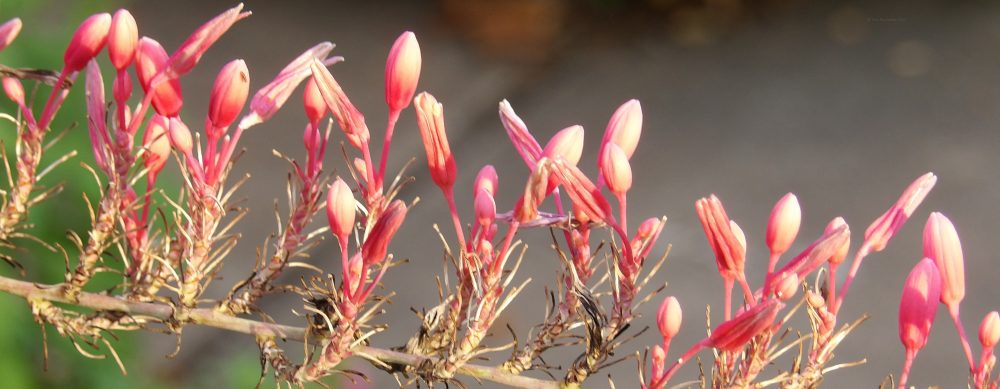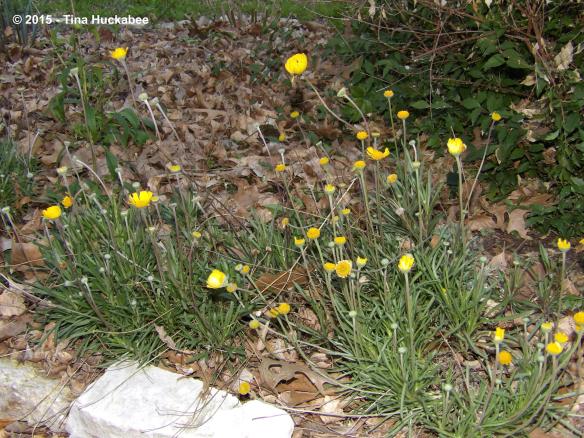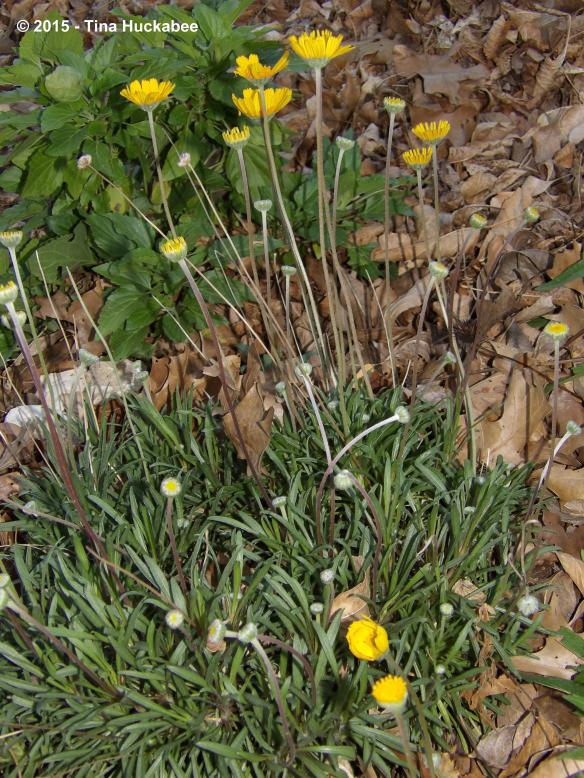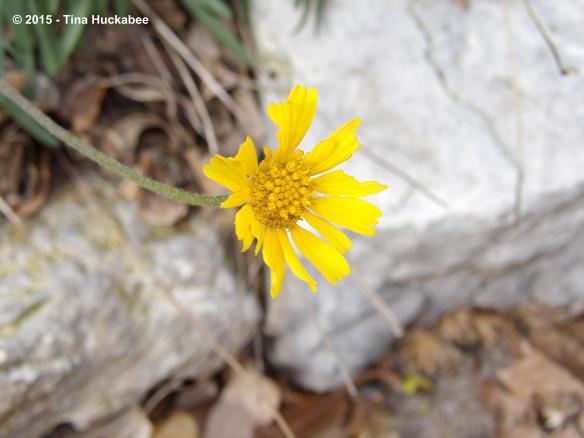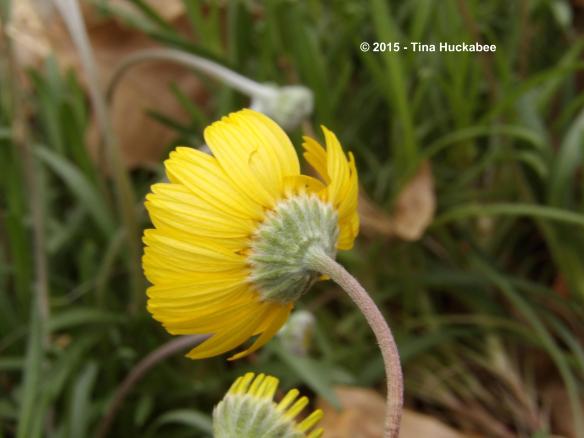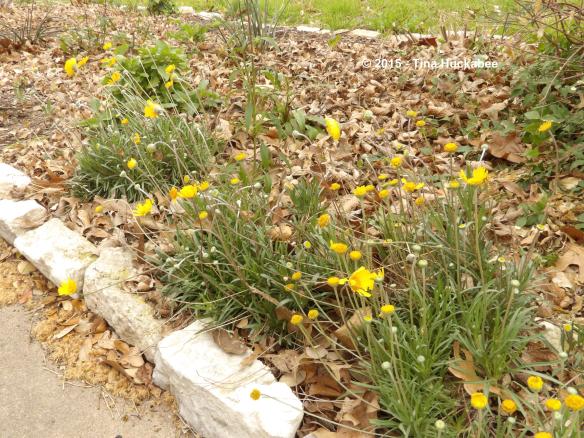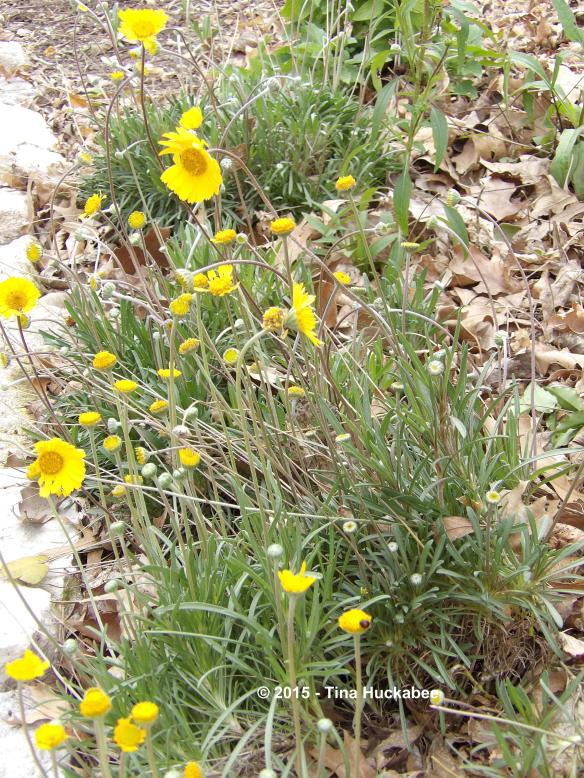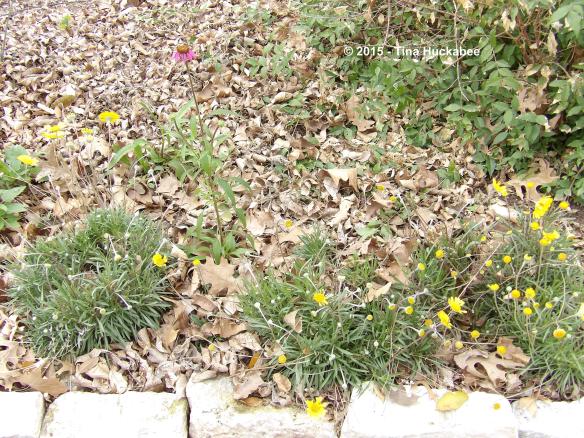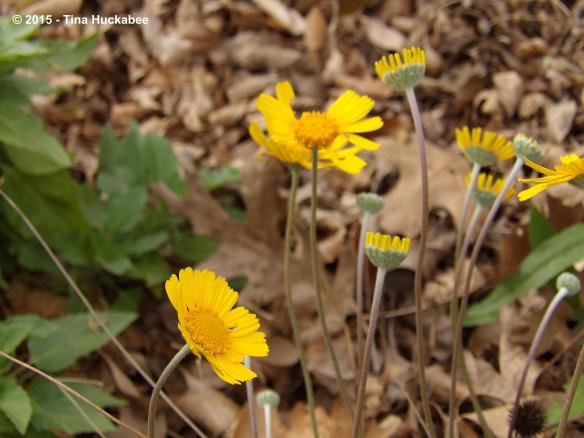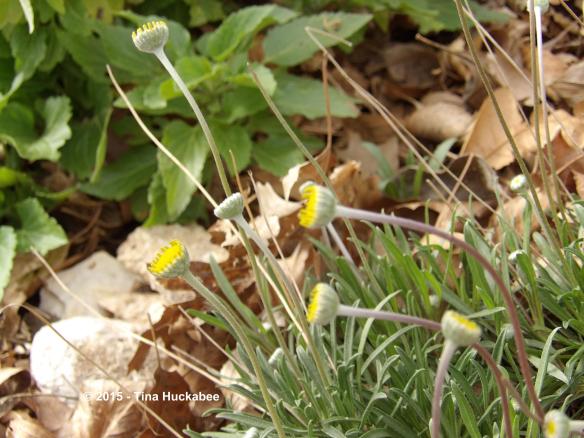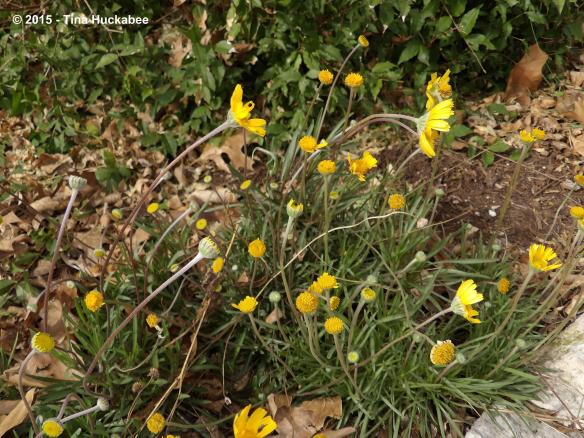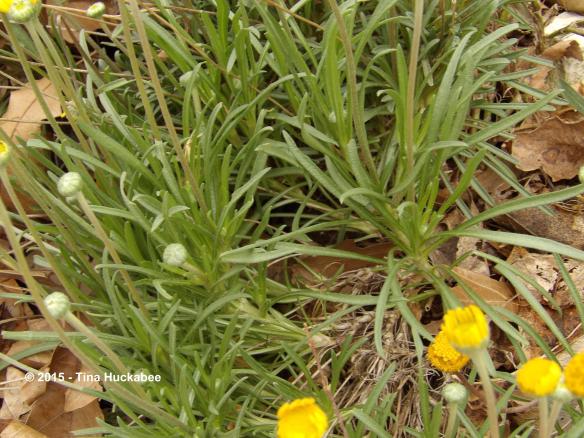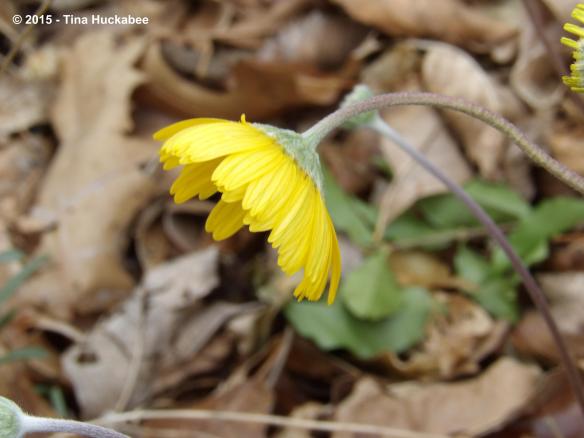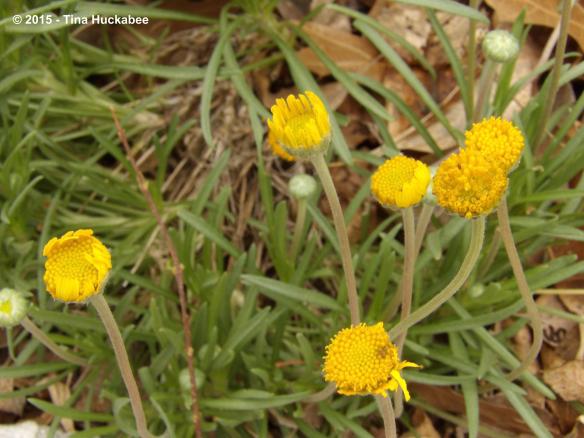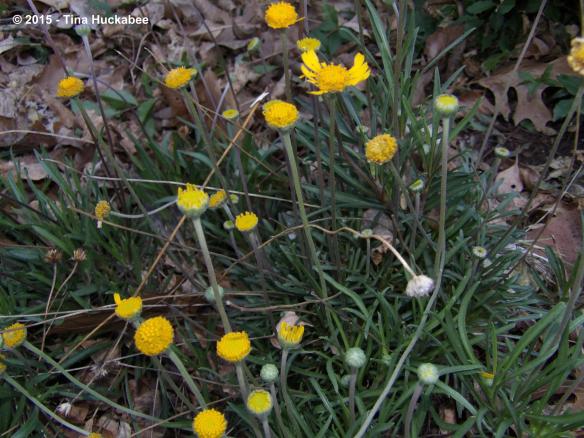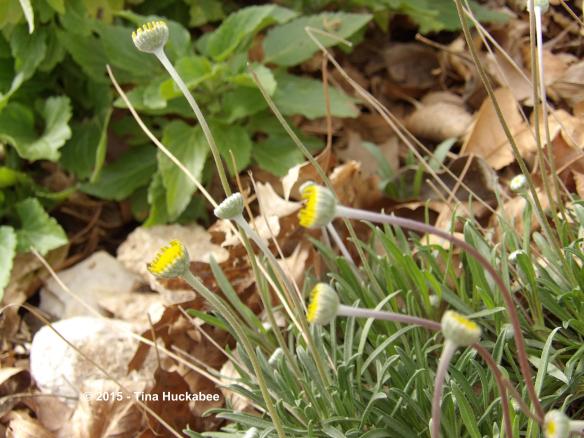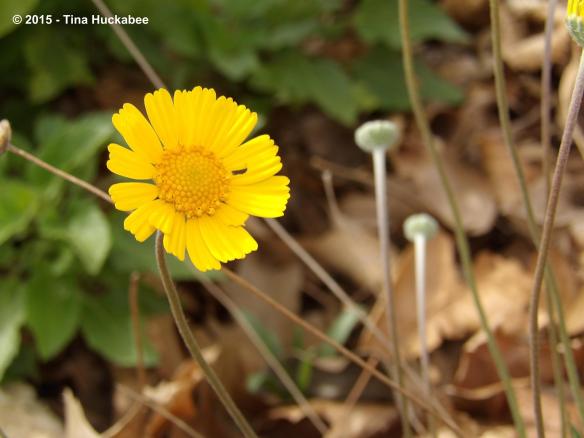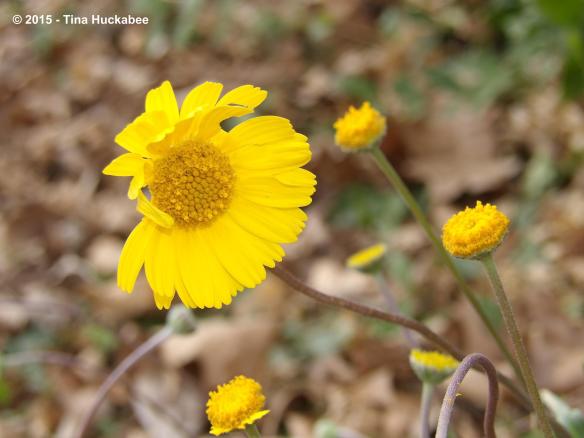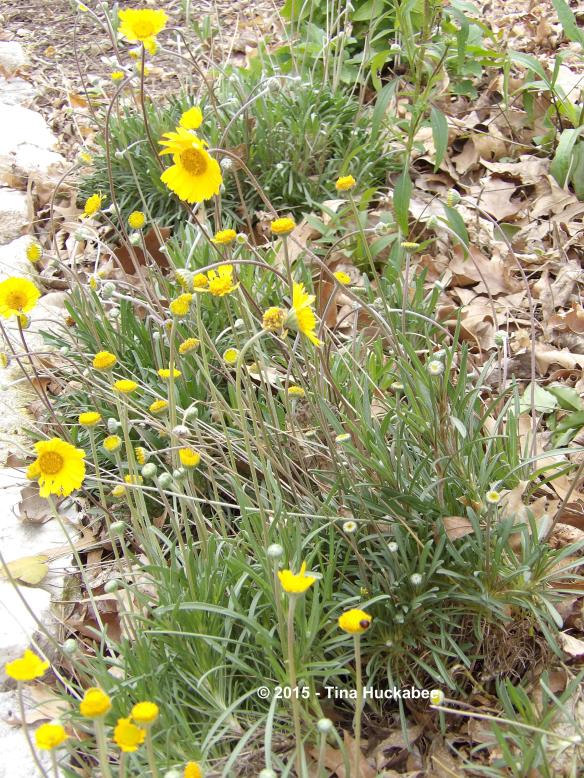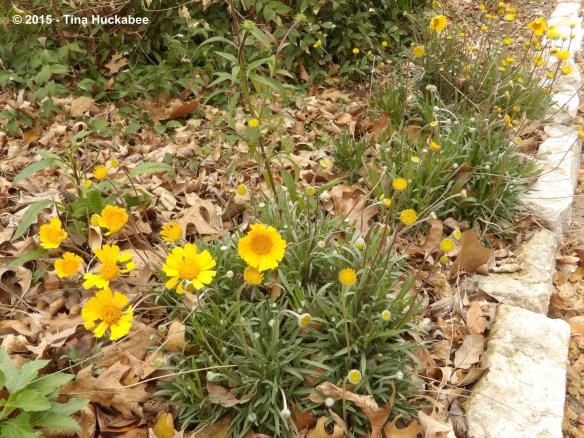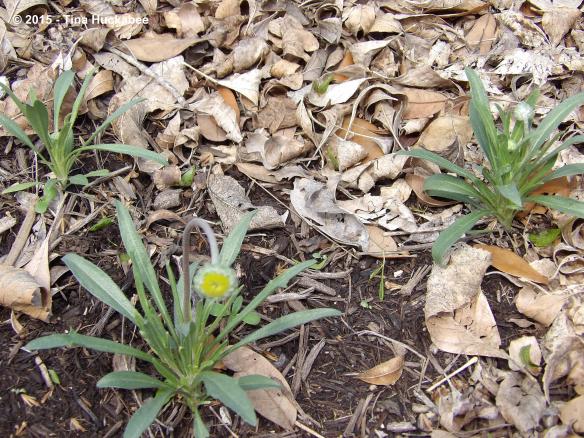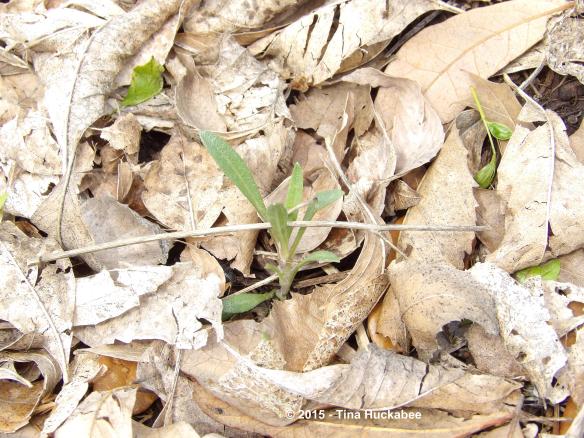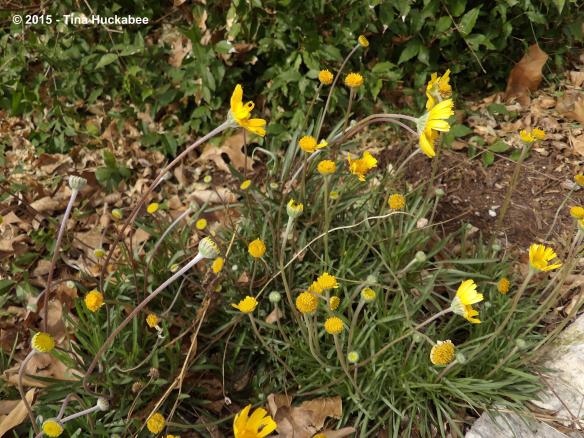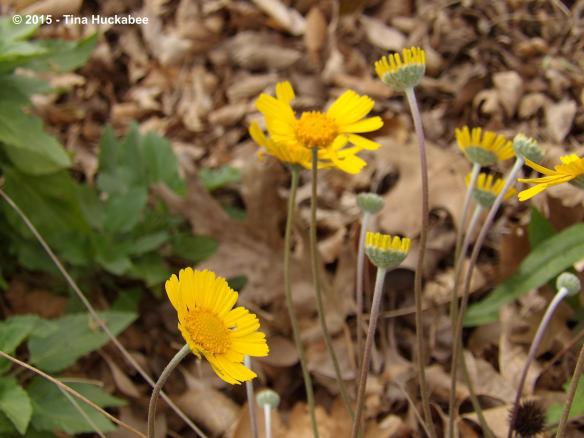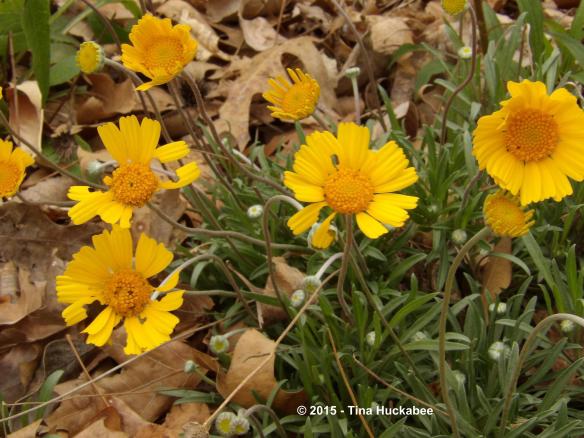I’m not going to pretend that this post is anything more than a runway fashion show of the botanical kind. What follows is a shameless and giddy celebration of the the bounty of blooming beauty that is early spring in my Austin, Texas, zone 8b, garden.
Golden Groundsel, Packera obovata, hit its flowering stride since last profiled for its beautiful foliage a few weeks ago.
Slender bloom stalks hold aloft the blasts of brilliant yellow,
…and the gardener smiles. Tiny critters of all sorts visit–to rest,
…and pollinate.
I’m not thrilled when a fly makes its way into my kitchen, but am happy to see it sipping the sweet stuff from the Golden Groundsel.
Spiderwort, Tradescantia, plants are strutting their flower-power and keeping the honeybees busy.
This Giant Spiderwort keeps company with garden furniture.
The many Spiderwort clumps my garden enjoy some variability in size and coloration and I suspect that there’s more than one species growing and cross-mingling through the seasons.
Coral Honeysuckle, Lonicera sempervirens, a vine hosting dripping clusters of tubular beauty,
…are surrounded by tiny native metallic bees, which I can only manage a vague photograph of.
Actually, that’s not really true, but you’ll have to wait until my own Wildlife Wednesday on April 6th to see some slightly better photos of one of the stunningly gorgeous and fast-flying metallic wild bees.
This Coral Honeysuckle bloom cluster and the not-quite-open Spiderwort look like they’re trying to reach one another for a smooch.
Well, it is spring, you know–the season of love!
Yellow Columbine, Aquilegia chrysantha var. hinckleyana,
…and the hybrid between A. chrysantha and A. canadensis, pose beautifully and are available for nectaring, too–if you possess the right proboscis, that is.
The A. canadensis is a smaller, mostly brick-red columbine. But when cross-pollination occurs, the flower of the hybrid is typically larger, with more yellow and a blush of red. Over the years, the columbines in my gardens have hybridized and I’m delighted with nature’s improvisations.
Globe Mallow, Sphaeralcea ambigua, is also open for business, awaiting interviews from native bees. So far, it’s been teeny, tiny bees, too fast for this photographer to capture with any competence.
The first blooms of many-to-come Purple Coneflower, Echinacea purpurea, have unfurled their pinky-purple glory, welcoming spring and their lengthy growing season.
Another first is with this Brazos Blackberry bloom, which heralds more of the same.
Once those flowers are spent, berries will not be far behind. Yum! I can taste the blackberries now–as well as the blackberry cobbler. Bring’em, blooms!
Dancing at the ends of slender bloom stalks all winter and continuing their performance in the spring breezes, the cheery, bouncy Four-nerve Daisy (Hymenoxys), Tetraneuris scaposa, flowers are nearly non-stop bloomers.
Tired of these tidy, singleton blooms? How about this cascade of Blackfoot Daisy, Melampodium leucanthum.
A tough Texas native that is best when growing out of poor soil or rock, this one is content and flowering in my Green Tower, which is where I grow veggies and most of my herbs. The Blackfoot Daisy buddies-up to a thyme plant which also flourishes in the Tower.
Due to the non-winter this year, Mexican Honeysuckle, Justicia spicigera, wasn’t freeze-knocked to the the ground and thus is blooming with orange abandon this early spring.
Mexican Honeysuckle boasts constant pollinator activity, especially from a variety of bees.
There’s more where that came from!
There are too many blooms and not enough time to showcase them all–they’ll just have to participate in another parade!
Thanking Carol at May Dreams Garden for hosting this monthly bloom frenzy known as Garden Bloggers’ Bloom Day. Share your garden pretties, then click over to her lovely blog to see and learn about blooms from many places.
